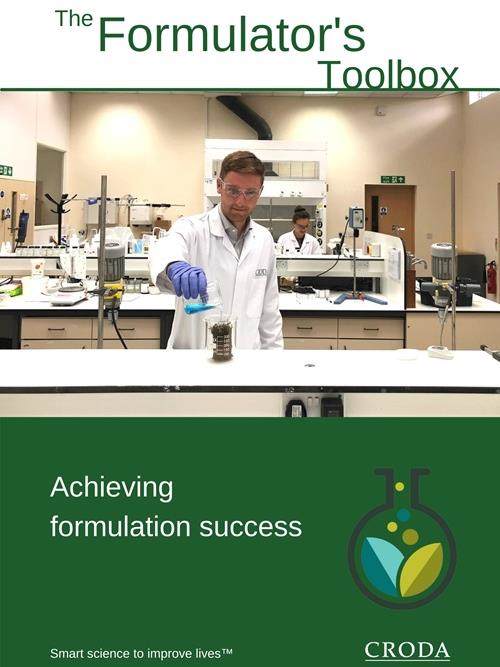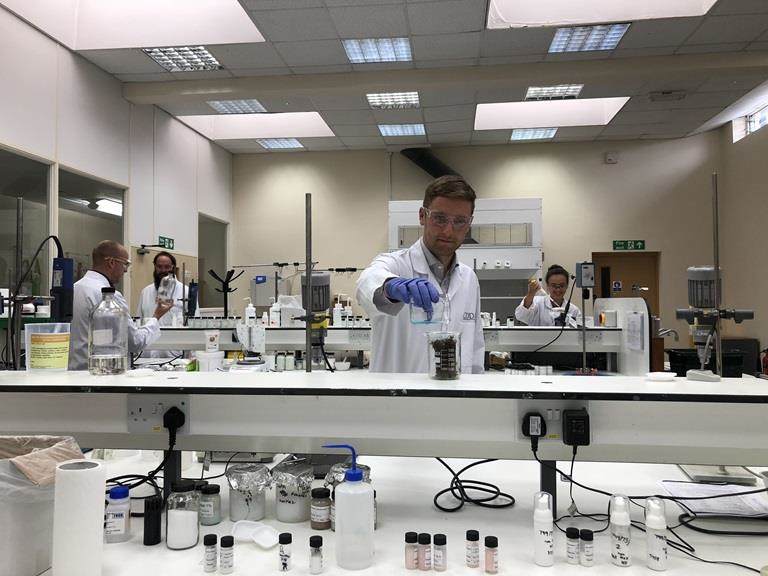
Dispersible concentrate (DC)
Dispersible concentrate (DC) formulations are liquid formulations consisting of an active ingredient dissolved within polar solvent(s). DC formulations also contain water-free or low-water-content surfactants, including an aqueous dispersant, to better optimise performance and stability upon dilution. These formulations are widely used in agriculture, particularly in pesticide applications.
Upon dilution, the active ingredient precipitates out, forming solid crystalline particles that are stabilised within the aqueous phase by the aqueous dispersants. The crystalline particle growth is controlled and limited by the other co-surfactants present within the system. Specific active ingredients such as difenoconazole, a triazole fungicide, demonstrate how effective a well-balanced DC system can be in maintaining stability and efficacy.

There are four key areas to consider when developing a DC formulation:
1. Active ingredient selection
A suitable active ingredient is of high-purity, stable against hydrolysis, fully soluble within the solvent system and insoluble within water.
2. Polar solvent selection
A polar solvent or blend of sufficiently polar solvents should solvate all active ingredients and dissolve all additional co-formulants.
3. Surfactant system selection
A DC formulation’s surfactant system contains an aqueous dispersant to stabilise active ingredient crystals on dilution, while additional surfactants such as high or low HLB surfactants controls the initial growth of active ingredient crystals. Croda offer a range of recommended surfactants suitable for use within DC formulations (see below).
4. Appropriate formulation testing
Typical CIPAC testing is carried out after development to evaluate formulation stability and performance. This includes characterisation of particle size, dispersibility, and rheology, which are critical for ensuring long-term stability and ease of application.
Benefits
- Simple to manufacture
- Good physical stability equal to emulsifiable concentrate (EC) formulations
- Low melting point active ingredients can be dispersed
- High biological activity
- Good chemical stability
- Water-free formulation
- Biocide free
- Good long-term physical stability compared to oil dispersion (OD) / suspension concentrate (SC) formulations
Limitations
- Limited number of active ingredients dissolve in polar solvents
- Moderately low active content: <350 g/L typical
- Requires water-free solvents and surfactants to avoid active degradation
- Solvent odour/toxicity
- Complex solvent selection to maintain high active loading and surfactant miscibility
- Requires water-insoluble active ingredients
- Requires good in-tank mixing
- Robust surfactant system to effectively control particle size on dilution
The Formulator's Toolbox (Full Version)

Products recommended for DC
Aqueous dispersants within DC formulations physically stabilise solid active ingredient particles that form on dilution, limiting active ingredient crystal growth over the long term.
 New
New
Atlox™ 4921
.jpg&mn=cropcare&w=768&xr=0&yr=0&xfp=6&yfp=6&hash=03A08E2BE410ABFAB97AA35279EE7D5D19C138999FEC74AA)
Crodafos™ C10/5A
Surfactants limit the size of active ingredient particles immediately after DC dilution, and usually a mixture of two surfactants are included. Commonly used is a high HLB surfactant with a medium or low HLB surfactant to ensure optimum packing at the crystal surface on dilution.
.jpg&mn=cropcare&w=768&xr=0&yr=0&xfp=6&yfp=6&hash=48717E6EA80954ABD146F117F2CAC16E19C138999FEC74AA)
Atlas™ G-5002L
Surfactants limit the size of active ingredient particles immediately after DC dilution, and usually a mixture of two surfactants are included. Commonly used is a high HLB surfactant with a medium or low HLB surfactant to ensure optimum packing at the crystal surface on dilution.
.jpg&mn=cropcare&w=768&xr=0&yr=0&xfp=6&yfp=6&hash=20085CA4656E3D1606EFFB22F3D81A0819C138999FEC74AA)
Atlas™ G-5000
Surfactants limit the size of active ingredient particles immediately after DC dilution, and usually a mixture of two surfactants are included. Commonly used is a high HLB surfactant with a medium or low HLB surfactant to ensure optimum packing at the crystal surface on dilution.

